Keratosis is a harmless skin condition in which the skin becomes uneven and rough. A benign disorder that is more often left untreated is characterized by numerous small papules, mainly around hair follicles on the forearms, legs, buttocks, and sometimes on the cheeks, which give a goosebump or goose bump skin ".
Keratosis can cause cosmetic inconvenience, but from a medical point of view, it is completely harmless. Follicular keratosis often occurs in healthy people.
Record content:
- 1 Symptoms and Signs
- 2 Causes
- 3 Diagnostics
-
4 Treatment methods
- 4.1 Exfoliating Creams
- 4.2 Creams to prevent blockage of follicles
- 4.3 Laser treatment
- 4.4 Folk remedies
- 5 Possible consequences and complications
- 6 Follicular Keratosis Video
Symptoms and Signs
The skin disorder causes dry patches and tiny light-colored bumps, usually on the shoulders, thighs, cheeks, or buttocks. The bumps do not hurt or itch. The rash is temporary or permanent and affects almost 60% of adolescents and about 40% of adults.
For most people, keratosis is asymptomatic and often unaware of their disease. It tends to appear in the first 10 years of life. May worsen during adolescence and often disappears in adulthood after age 30. In about half of the cases, the family history is positive.
Follicular keratosis, which can be treated with mild cleansers, is considered normal by many doctors. From an aesthetic point of view, it gives many unpleasant sensations. Therefore, moisturizers and prescription creams can be used to improve the appearance of the skin.
Signs include:
- fine lump, similar to sandpaper;
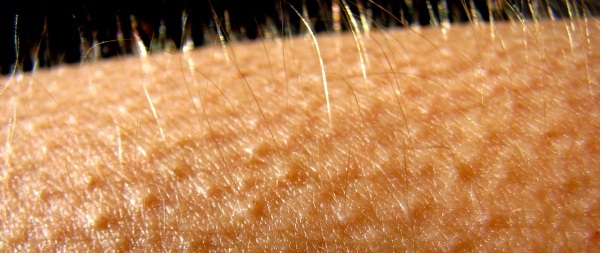
- dry, rough skin in areas with unevenness;
- sometimes itchy creeps that match skin tone (bumps may look like pimples or a rash).

Sometimes, the skin becomes itchy and inflamed, especially during seasonal changes, or in winter when indoor air is dry.
Causes
Follicular keratosis, which can be treated with simple but effective means, can be in anyone. Although this skin condition often affects children and adolescents, especially during puberty, adults also suffer from it. It is more common in women than in men.
Many doctors assume the disorder is genetic. This is usually seen in twins, in patients with atopic dermatitis, in people with very dry skin and many rather rare dermatological syndromes.
Certain drugs, such as cyclosporine, tyrosine kinase inhibitors, have been found to cause skin changes indistinguishable from keratosis and disappear after the medication is stopped. But the exact cause of the skin disorder is still unknown.
Bumps with keratosis occur due to excessive accumulation of keratin in the surface layer of the skin on individual hair follicles. Keratin forms a scaly plug that clogs the opening of the hair follicle.
The keratin plug can contain one or more twisted hairs, fills and widens the funnel of the hair follicle and protrudes above the skin surface. In the upper part of the dermis, there may be an accumulation of perivascular lymphocytic infiltrate.
A lot of plugs usually form, causing patches of rough, uneven skin. No one knows exactly why keratin accumulates. But it can happen due to genetic diseases or other skin conditions such as atopic dermatitis. Dry skin makes this condition worse.
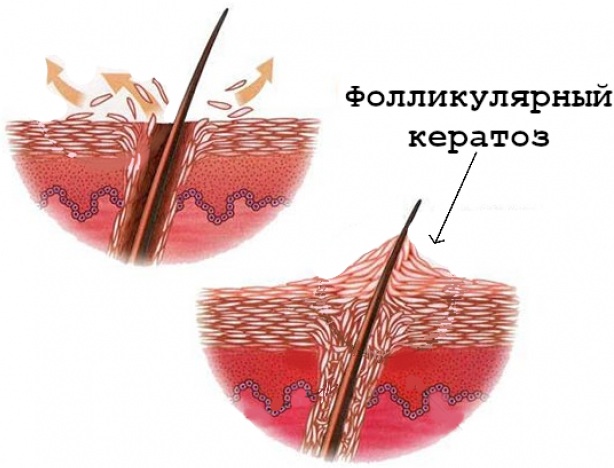
On the skin examined under a microscope, a slight thickening and perforation of the hair follicle is noticeable. The upper layers of the skin may have some dilation of the small superficial blood vessels, causing the skin to become red or reddened.
Follicular keratosis can be present with ichthyosis, dry skin, seasonal allergies, rhinitis, asthma, eczema, and atopic dermatitis.
Diagnostics
Treatment for follicular keratosis is usually not required. But if you wish, you can visit a doctor who can diagnose the disease by looking at the affected skin. No testing required.
The diagnosis of the disorder is very simple and is based on the typical appearance of the skin in areas such as the shoulders. A family history is also helpful because the condition has a strong genetic makeup. A clinical examination by a physician confirms the diagnosis. In the case of late keratosis occurring in adulthood, the drug should be considered as a possible cause.
Since the appearance of follicular keratosis is recognizable, there is no need for special laboratory tests to make a diagnosis. A skin biopsy may be helpful in atypical cases.
Some diseases can mimic follicular keratosis:
- acne;
- miliums;
- folliculitis;
- eczema;

- atopic dermatitis;
- rosacea of the face;
- dry skin (xerosis).
The disorder may also resemble unusual skin conditions, such as:
- prickly lichen;
- red hair lichen;
- frinoderma (vitamin A deficiency);
- vulgar ichthyosis;
- vellus hair cysts.
Treatment methods
Follicular keratosis, which does not need to be treated with medication, gradually goes away on its own. But you can use any of the available products to improve the appearance of the affected skin. As a rule, treatment should be continuous.
Since there is no cure or universal effective treatment for hair keratosis, the list of potential lotions and creams is long. It is important to remember that, as with any disease, no therapy can be equally effective for all people.
Complete cleaning may not be possible. In some cases, the symptoms of hair keratosis may improve or disappear spontaneously without any treatment.
Healthcare professionals recommend general measures to prevent excessive dry skin, such as using mild, soap-free cleansers. Frequent lubrication of the skin is the mainstay of treatment in almost all cases.
Exfoliating Creams
If moisturizing and other skin care measures don't help, your doctor will prescribe medicated creams.
Creams for removing dead skin cells that contain alpha hydroxy acid, lactic acid, salicylic acid, or urea work well. With their help, dead skin cells are loosened and removed. These creams moisturize and soften dry skin.
Topical exfoliators are available over the counter or with a prescription, depending on the strength of the action. A dermatologist will help you choose the best option and advise on how often to use it. The acids in these creams can cause redness, burning, or irritation of the skin, so they are not recommended for young children.
| Name | Indications | Price, RUB |
| Keratosane 30 | Eliminates flaking, softens, soothes the skin due to the action of keratolytics.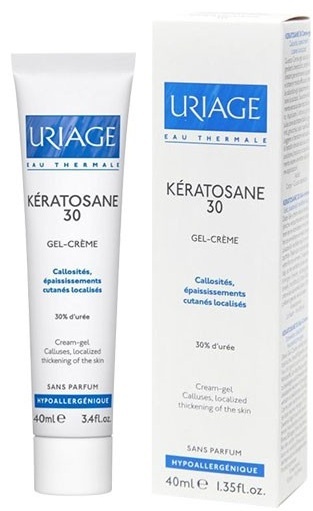
|
800 |
| CeraVe | The cream, enriched with 3 ceramides: urea, LHA, salicylic acid, gently exfoliates, moisturizes and renews rough skin, restores the protective skin barrier. | 400 |
| Body milk with AHA acids Skin Revealing Body Lotion 10% AHA, Paula's Choice | The complex containing green tea extract helps with follicular keratosis, age spots and age signs on the surface of the skin. | 2100 |
| Moisturizing & Exfoliating Body Peeling Cream with BHA Acid, Fact | Salicylic acid removes keratinized scales, urea, shea butter, coconut, grape seed nourish and moisturize the skin. | 493 |
Creams to prevent blockage of follicles
| Retasol | Normalizes terminal cell differentiation. Reduces the production of sebum, has an anti-inflammatory effect. | 420 |
| Retin-A | The drug is structurally close to vitamin A, affects the proliferation of cells in the papillary layer of the skin, helps to align the skin, prevents the formation of new papules. | 500 |
| Locatsid | Structurally close to vitamin A. Strengthens the process of cell multiplication in the papillary layer, reduces the cohesion of cells involved in the formation of papules. | 300 |
| Differin | An agent with anti-inflammatory and comedolytic properties.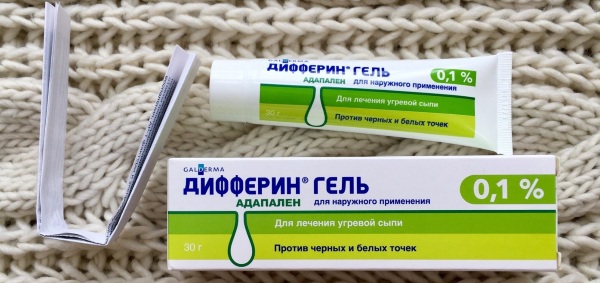 |
700 |
| Tazaroten Tazret Forte | Synthetic analogue of vitamin A. Activates the functionality of cells, reduces the activity of the sebaceous glands. | 2700 |
| Klenzite | Gel for external use, a metabolite of the retinoid, has an anti-inflammatory effect. Belongs to the class of antibiotics with bacteriostatic action. | 750 |
| Ayrol | Natural metabolite based on vitamin A, evens out the roughness and wrinkles of the skin, prevents the formation of keratin plugs. | 4500 |
These products can sometimes irritate and dry the skin. In addition, if the woman is pregnant or breastfeeding, the doctor may advise postponing topical retinoid therapy or choosing another treatment.
Regular use of the healing cream will improve the appearance of the skin. But even with treatment, keratosis tends to persist for years.
Flattening of lesions can be caused by a mixture of hydrophilic petroleum jelly with water (in equal proportions) or petroleum jelly with 3% salicylic acid. Lotions or creams containing buffered lactic acid (ammonium lactate), creams with urea, 6% salicylic acid gel, or 0.1% tretinoin cream are also effective. The use of acid creams in young children should be avoided due to the burning and tingling sensations that cause these sensations.
Laser treatment
Follicular keratosis can be treated not only with creams, but also with a laser, which is used in case of severe redness and inflammation. The technique brings some relief when creams and lotions are not enough. It may take several sessions for the treatment to work.
Fraxel laser treatment is a type of skin laser therapy. Fraxel treatment effectively influences the restoration of the skin surface from the inside. The result is improved texture, even tone, and a smoother surface.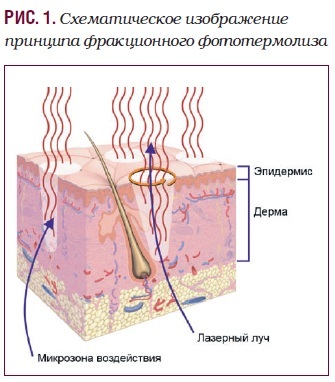
It is believed that this method is preferable to other methods of treatment because it is less dangerous and does not cause discomfort from redness and irritation.
The fraxel treatment helps the laser penetrate deep into the skin, triggering the body's natural healing ability.
At the same time, damaged tissues are replaced with younger ones, and the skin is healed.
There are few side effects of this treatment, but the outcome depends a lot on the degree of keratosis and on the person, as some people are endowed with the ability to recover quickly. After the procedure, slight swelling and redness may occur, and some patients experience abnormal swelling of the face and eyes.
In some cases, treatment with a pulsed dye laser or intense pulsed light (IPL) helps. These techniques reduce redness, but not roughness. Before deciding on the procedure, you should consult your doctor.
Folk remedies
Home remedies can be used alongside regular treatments. The following recipes are suitable for both adults and children.
Rice bran applications can help relieve irritation. Rice bran contains B vitamins such as B1, B2, B6, as well as vitamin E and some trace elements such as biotin, niacin. These all help fight free radicals, remove excess sebum, repair skin cells, and heal skin damage caused by inflamed pores.
Remedy 1: Rice bran and lemon.
- Mix 4 tbsp. l. rice bran powder with 2 tbsp. l. lemon juice to make a thick paste.
- Apply the mixture to the affected areas after cleansing.
- Massage in circular motions for 5 minutes and leave for 30 minutes.
- Wash off with water.
- Do this 3-4 times a week for at least 3 months.
Lemon is acidic, so if your baby shows any signs of irritation after the first use, it is worth switching to a mixture of rice bran powder and warm water.
Remedy 2: Rice bran and honey.
- Mix equal amounts of rice bran powder and honey. You can add a few drops of lemon juice or water if the mixture is too thick.
- Leave on the skin for 20 minutes and then rinse.
- Repeat 3 times a week.
Coconut oil is widely used for health, hair and skin. It has anti-inflammatory and antibacterial properties. Plus, its fatty acids soften and moisturize the skin, making it one of the most wonderful home remedies for hair keratosis.
Remedy 1: coconut oil and brown sugar
- Heat 2 tbsp. l. coconut oil, add 1 tbsp. l. brown sugar, mix well.
- Massage the affected areas with the mixture for several minutes.
- Wash off with water.
- Repeat the procedure daily.
Coconut oil is safe for the skin and can be consumed without sugar. To do this, massage the affected skin by rubbing in oil.
The lactic acid in yogurt helps exfoliate impurities and prevents keratin buildup on the skin. Its probiotics and other fatty acids keep the skin from drying out after exfoliation and make it supple.
- Apply a layer of plain yogurt to your skin.
- Leave to dry naturally.
- Then cleanse the skin thoroughly.
- Repeat the procedure 2-3 times a week.
Aloe is beneficial for many skin problems, including hair keratosis, as the plant has a cooling, soothing and healing effect. This herb has many essential vitamins, minerals, and enzymes that prevent further irritation.
- Peel the aloe leaf and squeeze out the gel.
- Apply the gel to the affected areas and leave for 10 minutes.
- After a while, gently massage for a few minutes, then wipe with a cotton pad.
- Rinsing with water is not required.
- Repeat the procedure 2 to 3 times a day.
Itching symptoms can be relieved by applying an ice pack to the affected area for a few minutes. A cold compress reduces inflammation and irritability. It is recommended to use ice on the affected area for four 5-minute intervals with a 5-minute break between each ice therapy session.
After the itching symptoms have disappeared, apply a moisturizer containing retinol to your skin. This tonic penetrates deep into the layers of the skin, targeting the source of inflammation by unclogging clogged pores. Repeat the procedure instead of scratching the bumps every time there is a flash of itching.
Possible consequences and complications
Complications are rare because keratosis is primarily a cosmetic condition of the skin. However, a temporary skin discoloration called post-inflammatory hypopigmentation (lighter than normal skin color) or hyperpigmentation, may occur after the disappearance of inflamed red bumps or after temporary exacerbation.
Scarring, overly aggressive treatments, or inflammation can result in permanent scarring, but this is extremely rare.
The disorder can be prevented by taking the necessary measures:
- Wearing protective clothing such as hats, long-sleeved shirts.
- Use of sunglasses to protect your eyes.
- Sun protection at noon when sunlight is most intense.
- Use quality sunscreens with an SPF rating of around 30.
Self-care measures will not prevent or cure hair keratosis. But they can improve the appearance of the affected skin.
- Use warm water when bathing and limit the time you spend in the shower. Hot water and prolonged showers or baths remove oil from the skin.
- Avoid using salt-based soaps. Gently exfoliate dead cells with a soft washcloth. Vigorous cleaning or removal of hair follicle plugs can irritate the skin and aggravate the condition. After washing or bathing, gently pat dry the skin with a towel so that some moisture remains.
- While the skin is still damp after bathing, apply a moisturizer containing lanolin, petroleum jelly, or glycerin. These ingredients soothe dry skin and help retain moisture. Reapply the product to the affected skin several times a day.
- Use a humidifier. A portable home air humidifier will add moisture to your home.
Follicular keratosis is a chronic disorder that gets worse or better intermittently, but is a benign, non-contagious, self-limiting skin disorder that usually occurs easy.
Many patients get better with age. Many patients report improvement in their symptoms during the summer months, and seasonal flare-ups occur during the colder winter months.
Any defect in the skin makes a person less perfect in the eyes of others. Follicular keratosis often spoils the appearance of the face, neck, arms, or back. For the treatment to be effective and the skin to be beautiful, you should consult your doctor before determining the treatment method.
Follicular Keratosis Video
Children's doctor about follicular keratosis:



